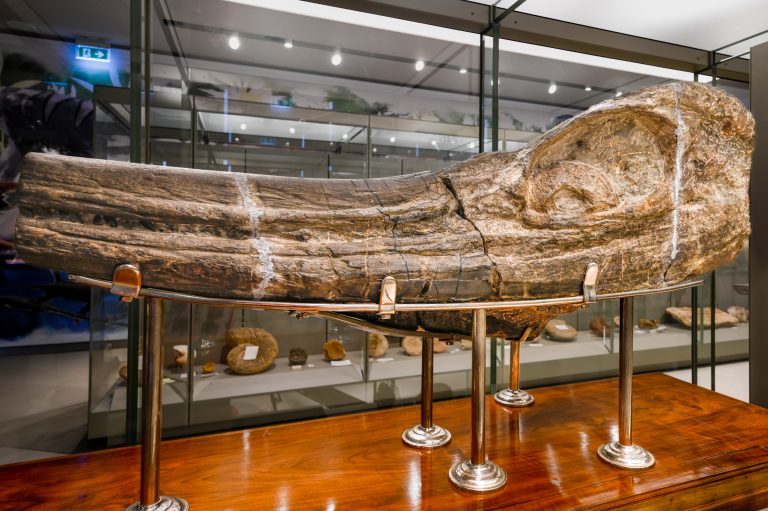Fossils allow us to reconstruct the history of life on Earth.
What are they? How do they form? What information do they contain?
The stunning exhibits and multimedia installations answer these questions, taking visitors on a true journey through time.
Perfectly preserved trilobites, corals, brachiopods and ferns take us into the Palaeozoic, the era when multicellular organisms underwent an extraordinary spread of diversity, completely changing the planet.
At first, life developed in the seas, with an increasing variety of plants, invertebrates, and fish, only later to conquer the land. The first forests were formed, of which today we find the wonderful remains of trunks and branches exhibited.
At the end of the Paleozoic era, one of Italy’s most famous fossil reptiles dates back: the Tridentinosaurus (280 million years ago), providing ancient testimony of the presence of terrestrial vertebrates in northern Italy.
Then we come to the Mesozoic, ‘the age of reptiles’, with the exceptional ‘petrified’ remains of flying and aquatic reptiles: sea crocodiles and ichthyosaurs, dinosaur footprints preserved in the rocks of the Dolomites, but also large ammonites.
A breathtaking video allows us to relive the last moments of the age of the great reptiles and what happened when a huge meteorite, some 66 million years ago, hit the Earth. The impact spelled the end of many species, but at the same time allowed others – including us mammals – to establish themselves.
Other major environmental and climatic changes are recounted by the specimens from the Cenozoic era: the fossils from the Pesciara di Bolca, an amazing ‘fossil aquarium,’ testify to a time when the Veneto region was a warm tropical sea teeming with life. Mammals, turtles, crocodiles, and fish from the Monteviale deposit follow, while in the showcases around we can admire the sirenians of Monte Duello and Possagno, ‘relatives’ of today’s dugongs.
The journey continues by entering an immense hall, with the ceiling evoking the ribs of the large Pleistocene mammals that populate it: the mammoth, lion and cave bear, woolly rhinoceros, aurochs and deer, along with the fearsome sabre-tooth tiger.
Giant dormice, elephants and dwarf hippos from Sicily then tell how, under conditions of isolation, evolution performed its strangest experiments, through curious adaptations, including gigantism, dwarfism and more.
Ever since the Pleistocene, Africa had been inhabited by a wide variety of hominin forms, and soon the first species of the Homo genus began to emerge in multiple waves, making up a tangled branching of human ancestors and cousins from which our species, Homo sapiens, later arose. The large Gallery of Human Evolution draws on casts and models to recreate the family tree of the hominins, intertwining paleontological, geographical and environmental data.

















